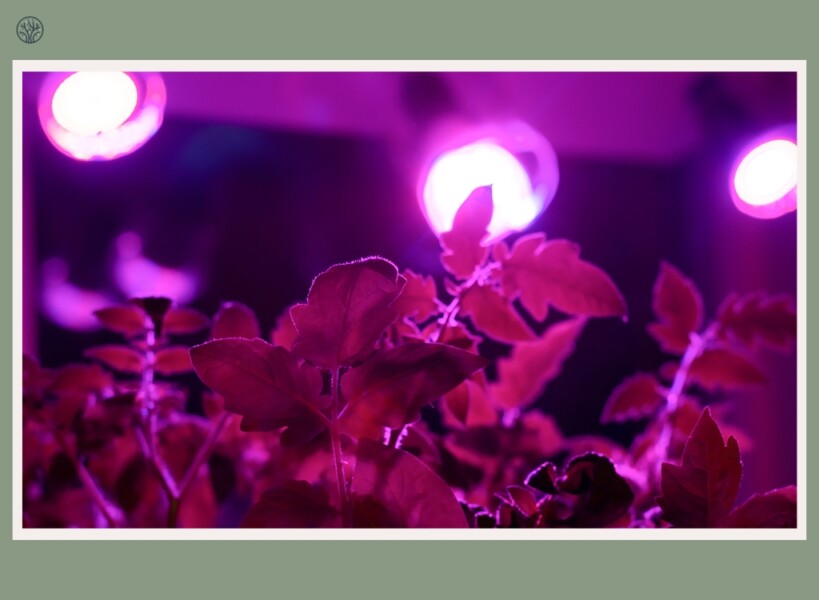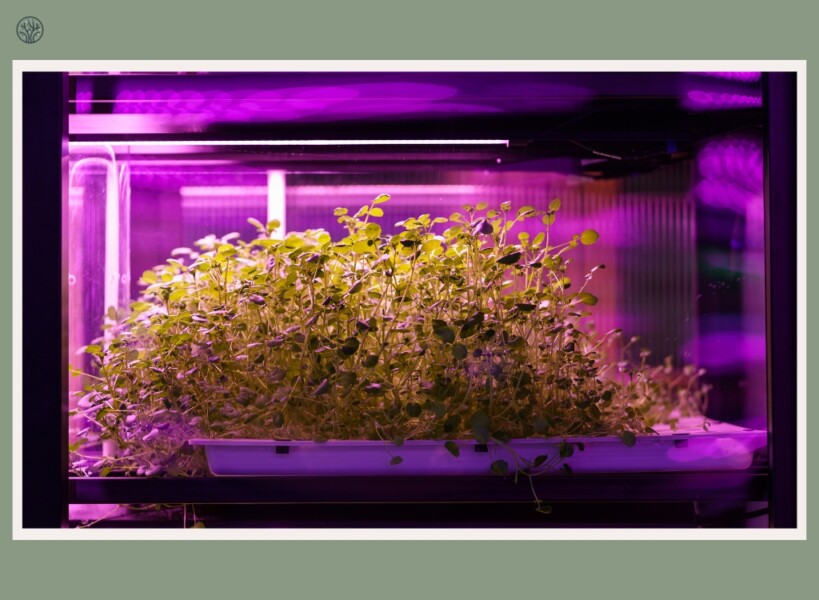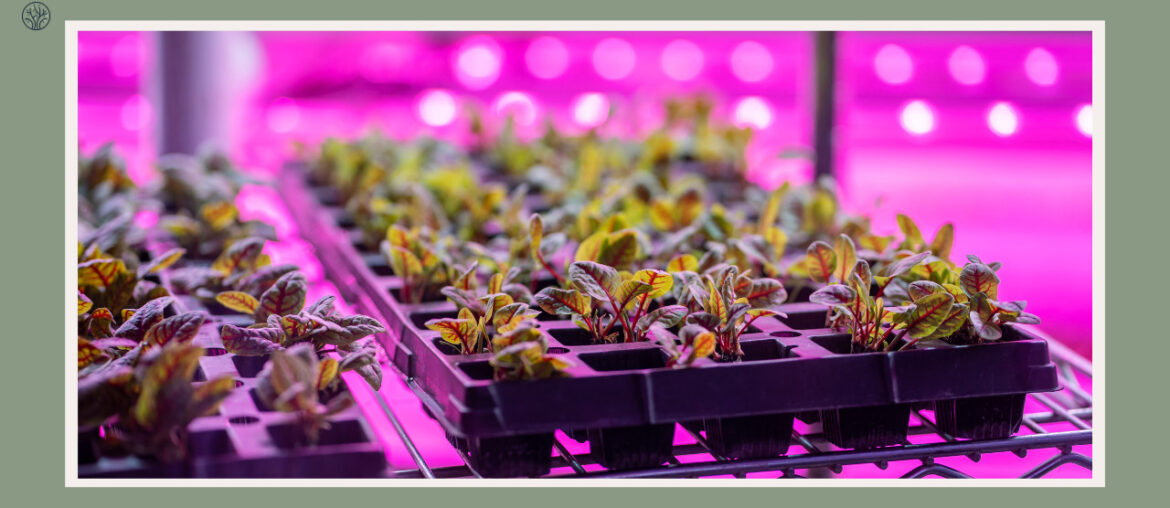Light along with water, soil, and nutrients are important aspects to keep a plant growing strong and healthy. Sunlight is usually enough for most plants, but some people think that using UV light can make their plants grow better. Is this true? Do plants need UV light?
The answer is no, plants do not need UV light to grow. The type of light that plants use the most is red and blue light, which help them produce chlorophyll for photosynthesis. Although UV light is not essential for plant growth, it can have some benefits if used in the right amount. We will explain how and why in this blog.
Key Takeaways
- Controlled exposure to UV light can accelerate photosynthesis, boost resin production, enhance root development, improve the taste of food, and provide natural protection against pests.
- Excessive UV light, particularly UV-B, can lead to plant bleaching and damage.
- UV light considerations differ for indoor and outdoor plants. Outdoor plants naturally receive UV light from the sun, while indoor plants often require supplemental UV lighting for optimal growth.
- It’s crucial to differentiate between UV-A and UV-B light, as they have different effects on plants. UV-A is less harmful and influences growth, while UV-B can boost protective compounds in plants.
Why Do Plants Need UV Light?
Plants do not need UV light to grow. However, with the right amount, UV light can assist them in many ways, especially for indoor plants that tend to get less sunlight.
Accelerating Photosynthesis
UV light, especially UV-A, can help plants photosynthesize better and faster. How does UV light do this? By enhancing light absorption and affecting the efficiency of the photosynthetic machinery, UV light can lead to better growth and healthier plants. Studies have shown that exposure to UV light can boost chlorophyll production and improve photosynthesis in plants.
Boosting Resin Production
Another intriguing aspect of UV light’s influence is how it boosts plants’ resin production. These resins are crucial not just for the plant’s defense, but also for giving plants their unique flavors and aromas.
When plants are exposed to UV-B light, they produce more resins as a way of coping with the stress. This boost in resin production not only makes them stronger and more resistant to environmental challenges but also significantly improves the quality of the harvest. This is particularly noticeable in plants that are used for their fragrance or medicinal properties.
Plant Bleaching
One of the important effects of UV light on plants is plant bleaching, which happens when plants get too much UV light, especially UV-B. Plant bleaching makes the plants lose their green color and turn pale or white. This is because of the damage inflicted on chlorophyll due to intense UV exposure.
Enhanced Root Development
UV light not only affects what’s visible above ground, but it can also affect the root systems. Interestingly, specific types of UV light, such as UV-A, can enhance root growth. This benefit isn’t due to the UV light reaching the roots directly; rather, it comes from the overall improvement in the plant’s health and strength due to UV exposure.
Healthier root systems mean that plants can absorb more water and nutrients from the soil. This helps them grow more and be able to cope with more environmental changes. This advantage is particularly noticeable when plants are transitioned from indoor environments, like greenhouses, to the outdoors. Here, the robust root development ensures that plants adapt more effectively and thrive in their new environment.
Better Tasting Food

UV light can also change how fruits and vegetables taste. Exposure to certain types of UV light, notably UV-B, encourages plants to produce a greater amount of flavonoids and other compounds. These substances are primarily for the plant’s defense against pests and diseases, but they also enhance the plant’s scent and flavor.
Take herbs and vegetables, for instance. When they receive ample UV light, they tend to produce more essential oils and flavors, making them more aromatic and palatable.
Protection From Pests
Another significant benefit of UV light is enhanced protection against pests. Certain wavelengths, particularly UV-B, can make plants produce chemicals that deter or even eliminate various bugs and pests. This means plants don’t need as much pesticide, which is better for them and the environment. Additionally, UV light can directly impact pests, discouraging them from lingering or reproducing on the plants.
Indoor Vs. Outdoor Plants
Plants’ growth patterns vary significantly between indoor and outdoor environments, largely due to differences in sun exposure.
Outdoor plants get UV light from the sun. Over time, they have adapted to not only utilize UV light for growth but also to protect themselves from its excesses. However, factors like geographical location, season, and daily weather conditions can significantly influence the intensity and duration of UV exposure outdoor plants receive.
Indoor plants, on the other hand, typically lack direct exposure to natural light and rely on artificial lighting for their growth needs. This is where artificial grow lights come into play. Many indoor grow lights are designed to mimic the sun’s spectrum, providing them with the sunlight they lack. However, you should also give your plants some time to rest and grow at night by adjusting the duration of the lights accordingly.
The UV light requirements vary from one plant species to another. While some indoor plants thrive with minimal UV light, others, particularly those originating from regions with intense sunlight, may need higher levels of UV exposure.
UV Light Setting Tips
There are 3 main types of grow lights on the market including HPS/MH (HID) grow lights, LED grow lights, and T5 grow lights. Knowing when and how to use each type is crucial for optimal plant growth.
The Right Way To Use UVs In Your Grow Room
Before we talk about the different kinds of grow lights, we need to know some basic rules about using UV light in our grow room.
- Intensity and Duration: The intensity and duration of UV exposure are critical. Plants generally need only a few hours of UV light each day. Overexposure can lead to issues like plant bleaching, while underexposure might not deliver the desired benefits.
- Distance from Plants: The distance between your light source and the plants is crucial. Too close, and you risk burning or bleaching the plants; too far, and the plants may not receive adequate UV light. Adjust the height of your UV lights based on the plant species and their growth stages.
- Timing: Introduce UV light gradually, especially for young or sensitive plants. Start with shorter exposure periods and increase gradually as the plants mature.
- Monitoring Plant Response: Keep a close eye on how your plants respond to UV light. Signs of stress, such as discoloration or curling leaves, indicate that adjustments are needed.
- Safety Precautions: UV light can be harmful to humans, so take precautions like wearing protective eyewear and limiting your exposure when the UV lights are on.
Exploring Different UV Light Sources: HPS/MH, LED, and T5
HPS, MG, LED, and T5 grow lights, each will have their own advantages and disadvantages. Here’s what you need to know about each type:
| Grow Light | Characteristics | Advantages | Disadvantages |
| High-pressure Sodium (HPS) and Metal Halide (MH) | Traditional grow lights with broad spectrum, including some UV. | – Broad light spectrum. – Useful for a variety of plant growth stages | – UV output is not specific or controllable -Less energy-efficient |
| Light Emitting Diodes (LED) | Modern grow lights that can include specific UV wavelengths. | – Greater control over UV spectrum and intensity – Energy-efficient – Precision growing capabilities | – Can be more expensive initially – Technology and options vary widely |
| T5 Fluorescent Lights | Efficient lights with low heat output, emitting some UV light. Specialized UV T5 bulbs are also available. | – Energy-efficient – Low heat output – Specialized UV bulbs available for enhanced UV spectrum | – Less intense light than HPS/MH – May require more bulbs for coverage |
UV-A Vs UV-B
If you want to use UV light to grow plants better, you need to know the difference between UV-A and UV-B. These two types of ultraviolet light affect plants in different ways.
UV-A light, which ranges from 315 to 400 nanometers, is the most common kind of UV light. It penetrates deeper into the plant tissue and is generally considered less harmful than UV-B. UV-A light can change how plants grow and develop, such as how big their leaves are, how long their stems are, and when they flower.

On the other hand, UV-B light, with wavelengths between 280 and 315 nanometers, is more energetic and can be more damaging to plants. However, in controlled amounts, UV-B light can have beneficial effects on plants. It can enhance the production of phenolic compounds, which can improve a plant’s resistance to diseases and pests. UV-B can also make some plants smell and taste better.
The key differences between UV-A and UV-B in plant cultivation are:
- Penetration Depth: UV-A penetrates deeper into the plant, affecting growth patterns and development, while UV-B has more surface-level effects, influencing protective compound production.
- Plant Response: UV-A can influence growth and development, while UV-B typically triggers stress responses that can be beneficial in moderation.
- Safety and Control: Managing UV-B exposure is more critical due to its potential for causing harm. Controlled exposure to UV-B can be beneficial, but it requires careful monitoring.
FAQs
Does LED light provide sufficient UV for plants?
The answer depends on the specific LED setup. Many modern LED grow lights are designed to include a spectrum of UV light, particularly UV-A. However, the intensity and range of UV wavelengths can vary significantly between different LED products.
Can plants absorb UV light through glass?
Standard glass, like that used in windows, filters out a significant portion of UV-B light but allows some UV-A to pass through. However, the amount of UV light that penetrates through glass may not be sufficient for certain plants, especially those that require high levels of UV. For these plants, supplemental UV lighting may be necessary to achieve optimal growth.
What is the role of UV light in photosynthesis?
While it’s not the primary light spectrum used for photosynthesis, UV-A can enhance the process by stimulating certain photoreceptors in plants. These photoreceptors can influence how efficiently plants use visible light for photosynthesis, potentially leading to more robust growth.
How does UV light affect overall plant growth?
UV light can accelerate photosynthesis, enhance resin and flavonoid production, and stimulate stronger defense mechanisms against pests. However, the effects of UV light are not universally beneficial and can vary depending on the plant species, the intensity of the UV light, and the duration of exposure.
Is UV light harmful to plants?
While excessive UV light, particularly UV-B, can be damaging, moderate and controlled exposure can be beneficial. The key is balance. Properly managed UV light can enhance plant growth and health, but it requires understanding the specific needs and tolerances of the plants in question. As with many aspects of plant care, what works for one species may not be suitable for another.









